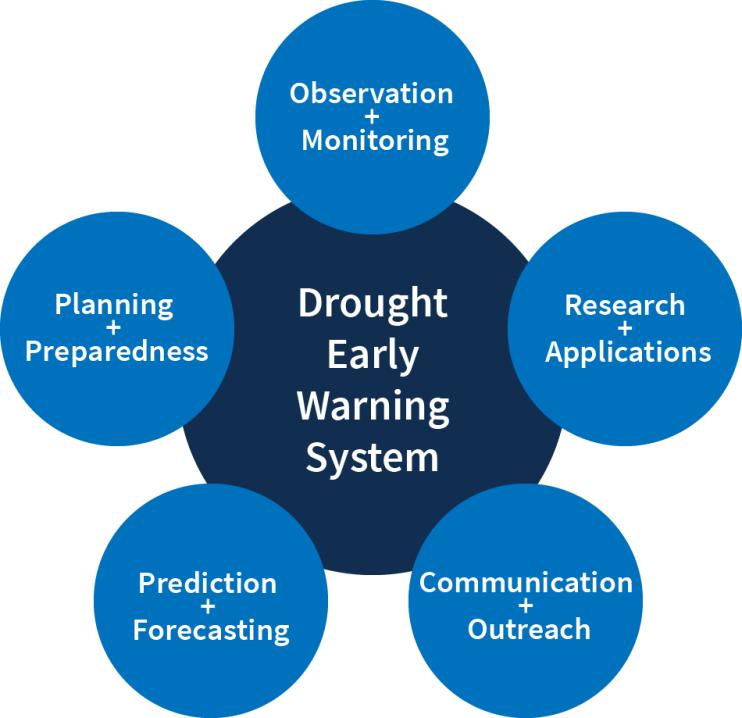Drought Early Warning Activities
Each regional drought early warning system (DEWS) focuses on improving early warning capacity for and resilience to drought in that region, including examining the role of extreme weather events and climate variability in drought.
NIDIS has developed regional drought early warning systems (DEWS) throughout the United States, where local networks of researchers, resource managers, policymakers, the private sector, academics, and other stakeholders share information and actions to help their communities cope with drought.
A DEWS coordinates this network of key regional partners so that decision makers and citizens can systematically approach drought monitoring and forecasting integration when planning and preparing for drought. Regional DEWS encourage innovation by integrating new, locally relevant drought information, and supporting the introduction and testing of technologies that detect and communicate drought risks and warnings.
Regional DEWS activities focus on five key areas for drought early warning (DEWS components): observation and monitoring, prediction and forecasting, planning and preparedness, communication and outreach, and interdisciplinary research and applications.

Drought Early Warning Activities
The table below shows ongoing activities related to drought early warning across the United States. Each activity falls into one or more of the five key areas of drought early warning systems (DEWS components): observation and monitoring, planning and preparedness, prediction and forecasting, communication and outreach, and interdisciplinary research and applications.
Arizona Local Drought Impact Groups are county-level groups that coordinate drought public awareness, provide impact assessment information to local and state leaders, and implement and…
Southeast Alaska, home to the northernmost temperate rain forest in the world, experienced frequent and cumulatively significant below-normal precipitation starting in autumn 2016, impacting…
2020
2022
This project aimed to build a predictive understanding of drought and to quantify the risk of droughts with certain characteristics in the lower and upper Mississippi and Ohio River basins. This…
2019
2022
The Great Plains and California consist of the first and second largest economies in the U.S., but both regions are prone to extreme droughts. Yet, it is…
2020
2023
This project produced decision calendars to inform users of where and when science can inform decision-making, and improve communication and usability of climate information. The project…
2018
2020

